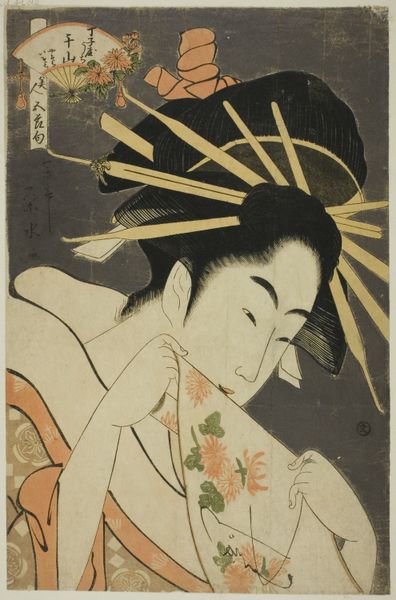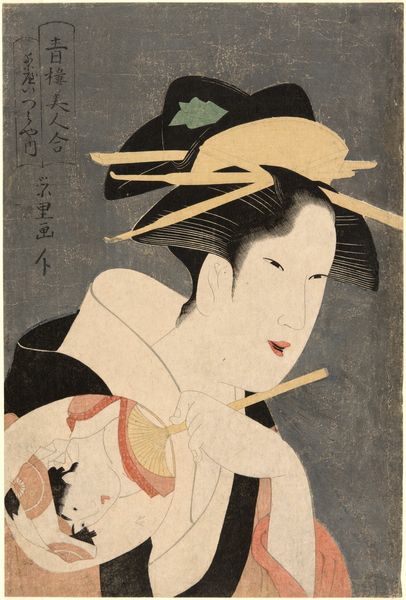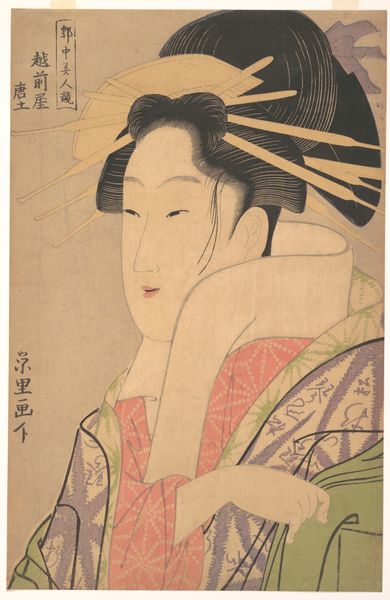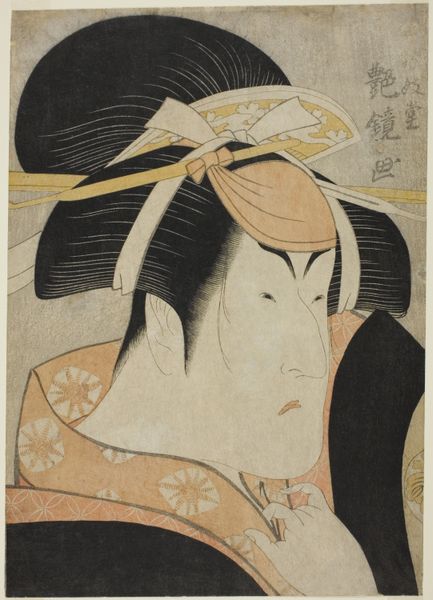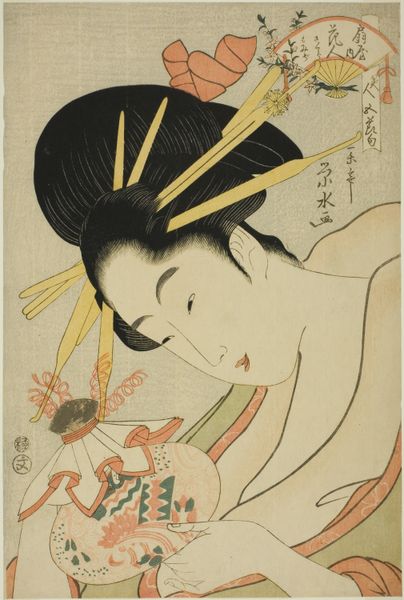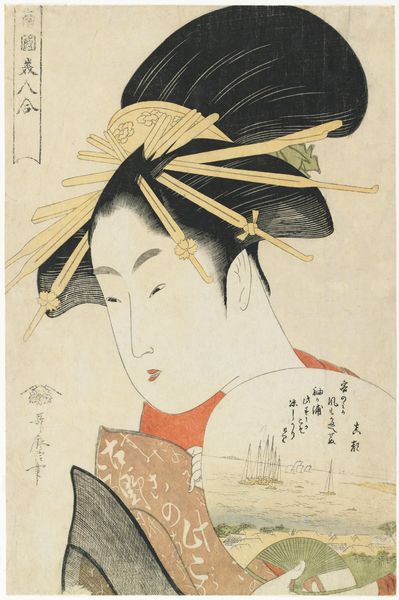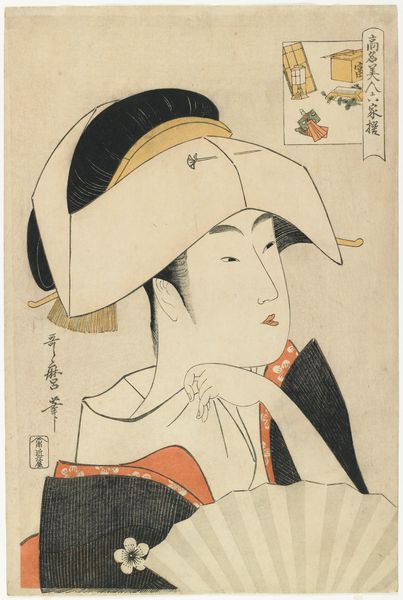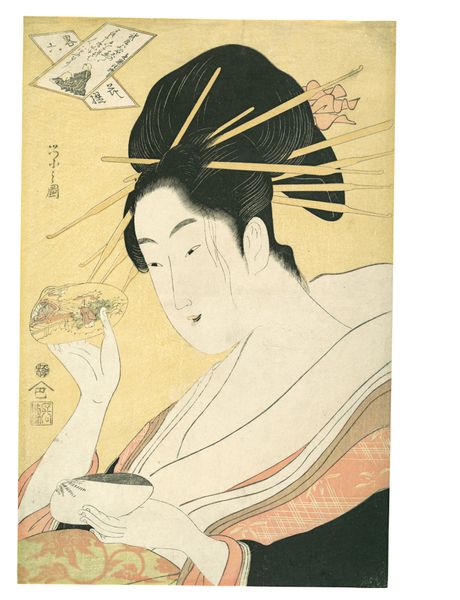
#
portrait
# print
#
asian-art
#
caricature
#
ukiyo-e
Dimensions: H. 13 3/16 in. (33.5 cm); W. 9 3/16 in. (23.3 cm)
Copyright: Public Domain
Curator: Here we have Ichirakutei Eisui's "A Beauty," created between 1793 and 1801. This exquisite woodblock print offers a window into the ukiyo-e tradition. What strikes you first about this piece? Editor: The delicate melancholy of it all. The subdued palette, the way the figure gazes downward, it creates a feeling of quiet introspection. It’s lovely. Curator: It is, indeed. Consider the subject position of women in Edo-period Japan and how images like these both reflected and possibly subverted expectations. This print portrays a figure often situated within rigid societal frameworks of beauty and desire. Editor: Absolutely. I’m particularly drawn to the artist's masterful use of line. The flow of the hair ornaments, juxtaposed against the crispness of her robe, all constructed with woodblocks… That material reality speaks to an industry that employed countless artisans. Can we delve into the labor aspect? How does that impact your interpretation? Curator: An important consideration! The collaborative nature of ukiyo-e—the artist, block carver, printer, and publisher—highlights a collective process, reflecting shared cultural values of the era while producing imagery for an expanding market for art and beauty products accessible to a broad demographic. We can understand the construction of female representation within this commercial context, including what ideologies it reinforces. Editor: Precisely. I find myself examining the actual wood and pigments used. What did it cost? Who had access? How did their origins – whether locally sourced or from abroad – influence the aesthetics and the perceived value? Ukiyo-e connected high art ideals with mass production. The sheer volume and distribution altered perceptions of beauty and worth. Curator: Well said. When viewed through an intersectional lens, one may examine what stories the artwork tells and what stories it silences concerning the women and those participating in the crafting of this popular art form. Editor: Right. And engaging with its materiality offers new perspectives on this portrait of “A Beauty”. The entire process, from the raw materials to the finished product distributed on the streets of Edo, embodies an elaborate cultural conversation. Curator: A fascinating perspective. Thanks to your materialist insight, I’ve been able to consider production practices of the era in connection to our own. Editor: And thanks to your advocacy for cultural context, I've considered how beauty and meaning evolve with accessibility, something vital to examine now just as then.
Comments
No comments
Be the first to comment and join the conversation on the ultimate creative platform.

